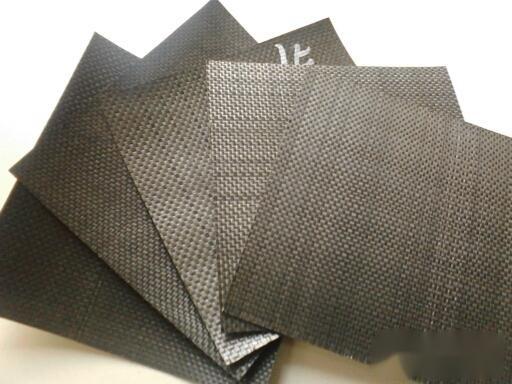Product Overview:
Woven Geotextile is made from polypropylene and polyethylene flat yarns, composed of at least two sets of parallel yarns (or flat yarns). One set running along the length of the loom (the direction of fabric movement) is called the warp, while the other set arranged transversely is called the weft. Different weaving equipment and techniques are used to interlace the warp and weft into a fabric form, which can be woven into different thicknesses and densities according to various usage requirements. Generally, woven geotextiles are relatively thin and possess considerable tensile strength in both longitudinal and transverse directions (with longitudinal strength exceeding transverse strength), providing excellent stability.
Product Specifications:
1. Weight range: 90-400g/㎡;
2. Width range: 1-6m;
3. Color: as per customer requirements (mainly black and white). Product features include lightweight, high strength, low elongation, good integrity, easy construction, excellent reinforcement performance, and low price.
Product Functions:
1. Woven geotextiles provide reinforcement: they can stabilize and limit the movement of engineering structures during long-term use, and they can transfer or distribute localized stresses acting on the soil over a larger area.
2. Woven geotextiles offer separation: they can separate different geotechnical materials to form a stable boundary layer, allowing each material to exhibit its characteristics and overall functions as required.
3. Woven geotextiles possess drainage and filtration capabilities: they allow water to pass through while blocking the loss of sand and soil particles. When used for drainage, placing the geotextile in poorly permeable soils can slowly pump water and rapidly discharge it along the geotextile.
4. Woven geotextiles can act as a tension membrane between two materials under different pressures when used in conjunction with geosynthetic membranes.
5. Woven geotextiles have a screening function: they can be placed horizontally in channels with flowing liquids containing suspended particles to prevent fine clay particles from passing through while allowing the liquid to flow.
6. Woven geotextiles can serve as a cushioning mat: placing them on slopes can prevent soil particles from being washed away by rain or allow for grass planting.
Application Areas:
◎ Water Conservancy Projects: seawalls, river embankments, lake dikes compliance projects; embankment protection projects, irrigation projects; reservoir seepage prevention and reinforcement projects; reclamation and land development projects; soft drainage; geotextile sandbag filling; flood control and emergency rescue;
◎ Highway Engineering: soft foundation reinforcement; slope protection; pavement anti-reflection joint structural layers; drainage systems; greenbelt isolation;
◎ Railway Engineering: railway bed reinforcement projects; embankment slope strengthening layers; tunnel lining waterproofing and drainage works; geotextile drainage blind ditches;
◎ Airport Engineering: runway foundation reinforcement; apron foundation and pavement structural layers; airport roads and drainage systems;
◎ Power Plant Engineering: nuclear power station foundation engineering; thermal power plant ash dam projects; hydropower station projects.














